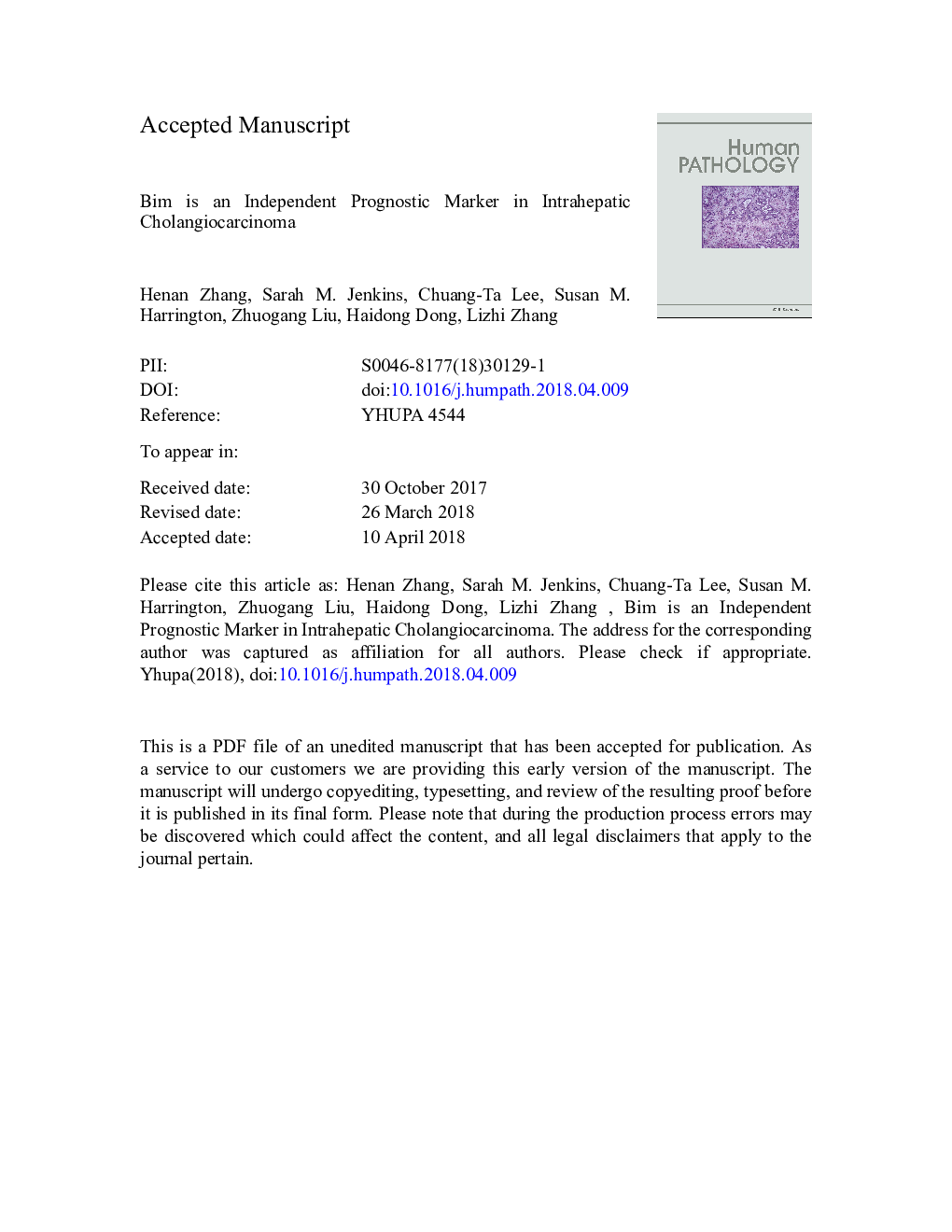| Article ID | Journal | Published Year | Pages | File Type |
|---|---|---|---|---|
| 8807474 | Human Pathology | 2018 | 30 Pages |
Abstract
Intrahepatic cholangiocarcinoma (ICC) is the second most common primary liver malignant tumor and has a poor prognosis. The prognostic factors associated with outcome remain poorly defined. In this study, we investigated the role of an important cell apoptosis initiator, Bcl-2 interacting mediator of cell death (Bim), by evaluating its expression and association with other clinicopathological features in ICCs. We analyzed 56 cases of ICC with clinical follow-up. The expression of Bim in ICC cells and other cellular components was evaluated by immunohistochemistry. Bim expression was considered up-regulated if Bim was detected in 10% or more of tumor cells. Of the 56 ICC samples, 19 (34%) had high Bim expression level, 15 (27%) were completely negative, and 22 (39%) were classified as low Bim expression (<10% positivity). Patients who had tumors with high Bim level had significantly longer overall survival than did those with low or no staining (median survival, 7.6 versus 2.6 years; hazard ratio, 0.40; P = .006). High Bim expression was also correlated with low Ki-67 index, and more importantly, none of the tumors with high Bim expression had lymph node metastases at the time of surgery. Our study demonstrates that Bim is an important and independent prognostic factor in ICC. Tumors with high Bim expression are associated with better prognosis through inhibiting tumor cell proliferation and metastatic ability. The development of new agents directly or indirectly targeting Bim may provide promising anticancer treatments.
Related Topics
Health Sciences
Medicine and Dentistry
Pathology and Medical Technology
Authors
Henan MD, Sarah M. MS, Chuang-Ta MD, Susan M. MS, Zhuogang MD, PhD, Haidong MD, PhD, Lizhi MD,
